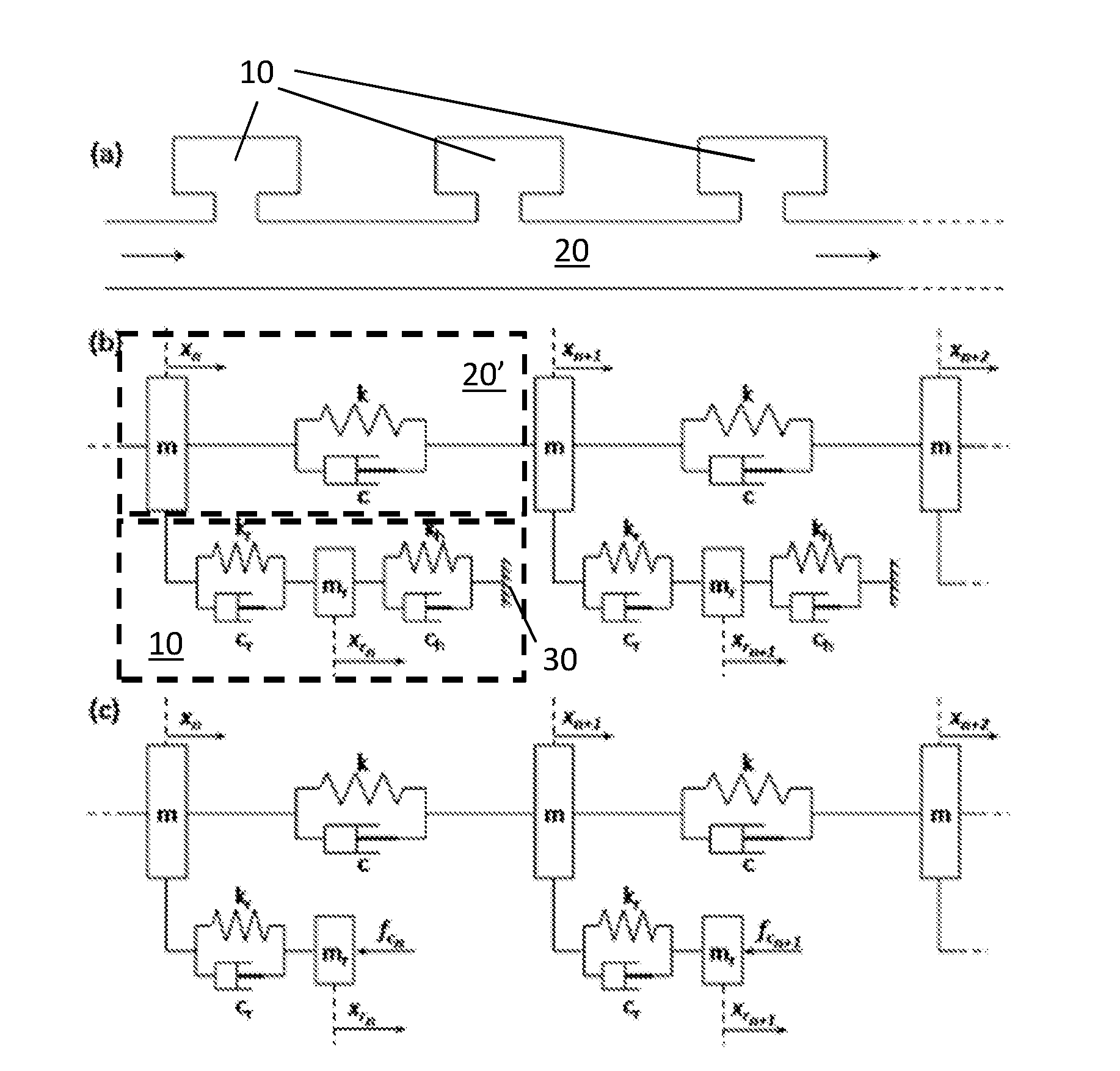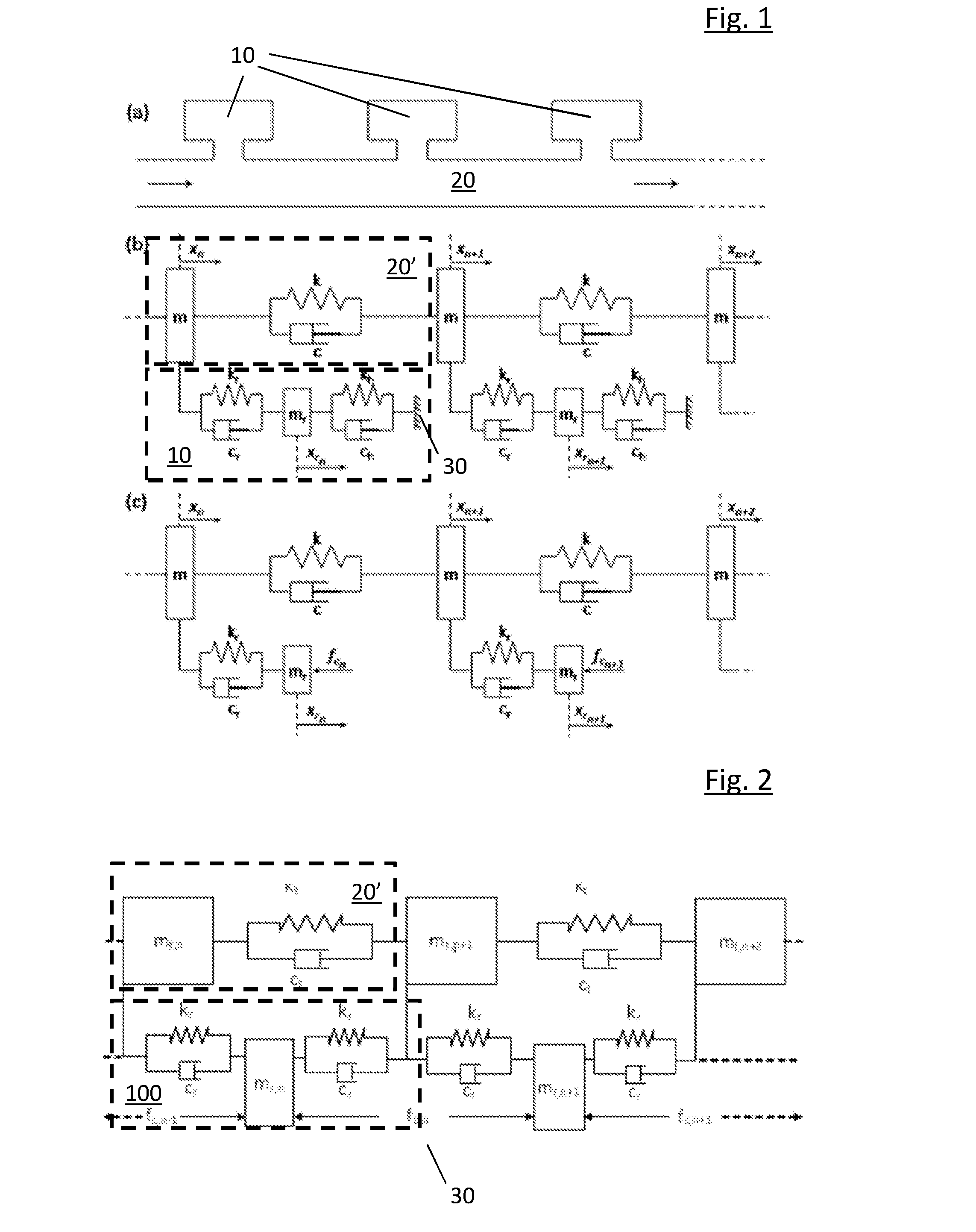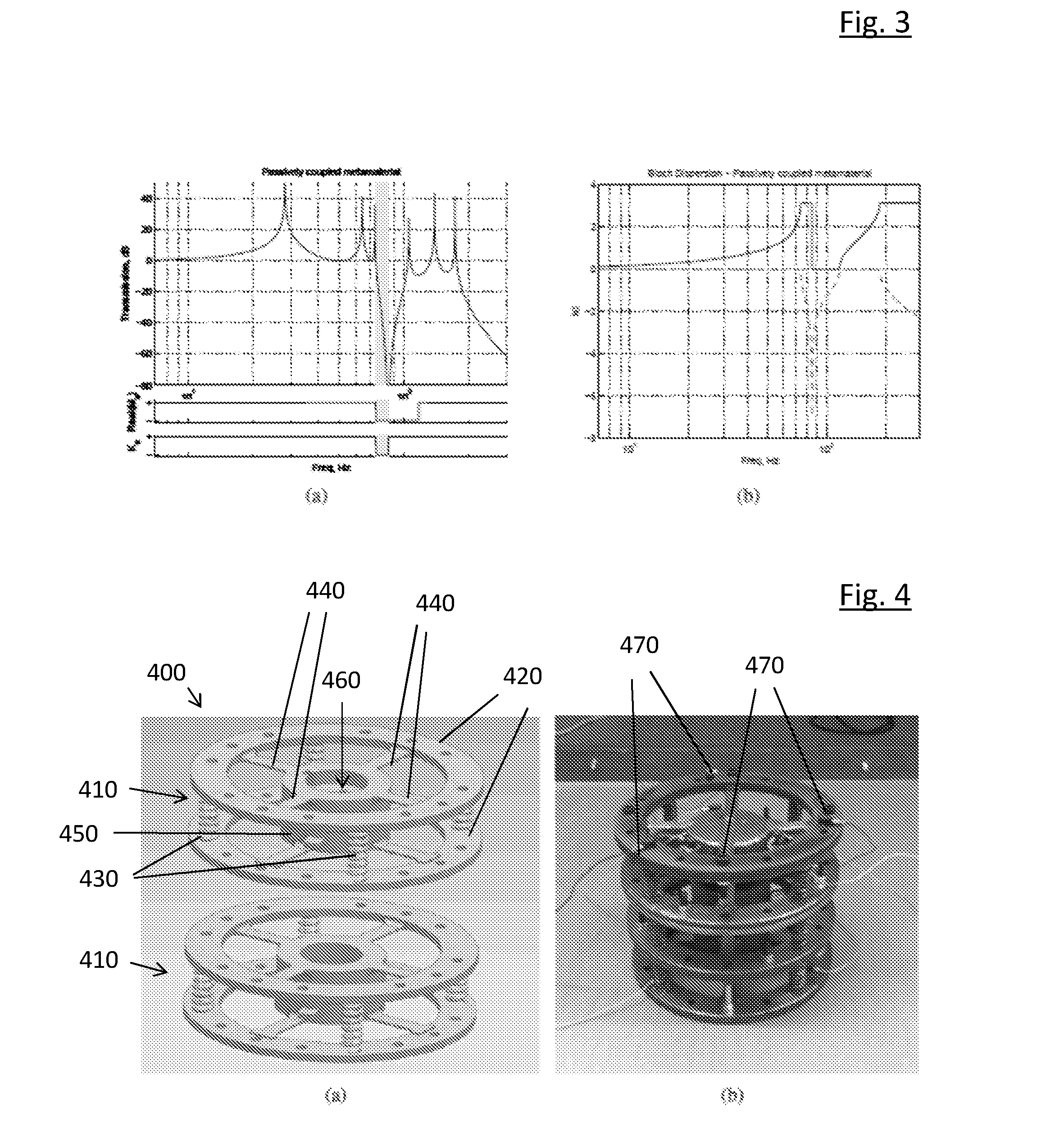Metamaterial
a technology of metals and materials, applied in the field of metals, can solve the problems of less desirable active control of the masses m/sub>r/sub>, high levels of attenuation in the transmission characteristics of materials at these frequencies, and achieve the effect of enhancing the attenuation of acoustic transmission
- Summary
- Abstract
- Description
- Claims
- Application Information
AI Technical Summary
Benefits of technology
Problems solved by technology
Method used
Image
Examples
Embodiment Construction
[0037]An example embodiment of the invention was manufactured in the form of an active 1-dimensional viscoelastic metamaterial consisting of a chain of transmission masses connected to each other and to resonator masses via spring elements. This locally resonant, periodic metamaterial has been developed as a proof-of-concept for a vibration isolator providing good attenuation at low frequencies. The example material achieves DNG behaviour through passive coupling of resonators to two transmission masses; in contrast, prior-art materials have one resonator mass per transmission mass and require active control to achieve double negativity.
[0038]The passively occurring band gap is enhanced using an active control architecture. Since locally resonant designs produce materials with dispersive properties, the beneficial DNG behaviour and low-frequency bandgap, although achieved passively, is in this example limited to fixed and narrow frequency bands. Active control was therefore employed...
PUM
| Property | Measurement | Unit |
|---|---|---|
| acoustic transmission | aaaaa | aaaaa |
| transmission structure | aaaaa | aaaaa |
| transmission structures | aaaaa | aaaaa |
Abstract
Description
Claims
Application Information
 Login to View More
Login to View More - R&D
- Intellectual Property
- Life Sciences
- Materials
- Tech Scout
- Unparalleled Data Quality
- Higher Quality Content
- 60% Fewer Hallucinations
Browse by: Latest US Patents, China's latest patents, Technical Efficacy Thesaurus, Application Domain, Technology Topic, Popular Technical Reports.
© 2025 PatSnap. All rights reserved.Legal|Privacy policy|Modern Slavery Act Transparency Statement|Sitemap|About US| Contact US: help@patsnap.com



